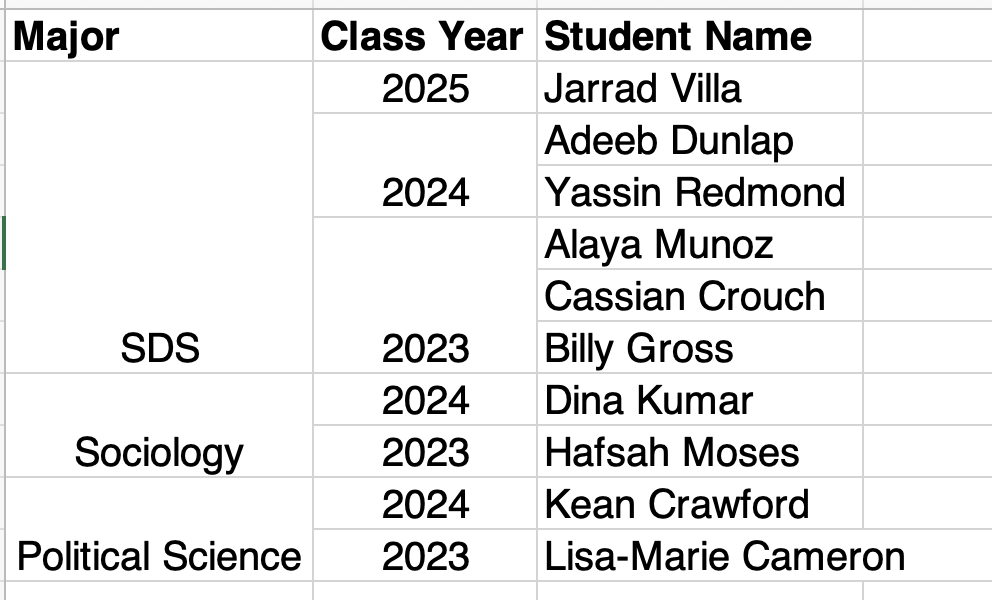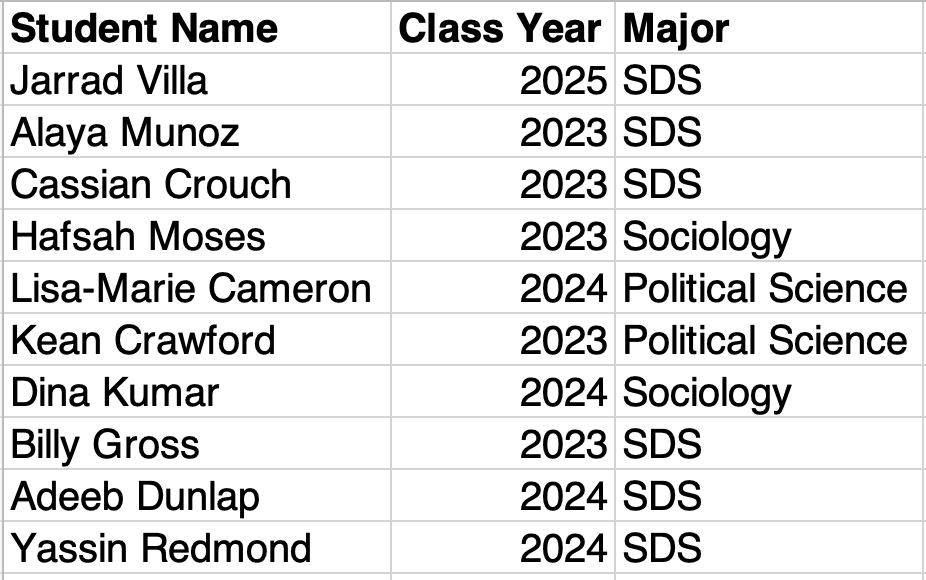Day Three: Data Fundamentals
SDS 189: Data and Social Justice
Lindsay Poirier
Statistical & Data Sciences, Smith College
Fall 2023
What is a dataset?

Grolemund, Garrett, and Hadley Wickham. n.d. R for Data Science. Accessed March 31, 2019. https://r4ds.had.co.nz/.
- a collection of data points organized into a structured format
- in this course, we will mainly work with datasets that are structured in a two-dimensional format
- we will refer to these as rectangular datasets
- rectangular datasets are organized into a series of rows and columns; ideally:
- we refer to rows as observations
- we refer to columns as variables
Observations vs. Variables vs. Values
- Observations refer to individual units or cases of the data being collected.
- If I was collecting data about each student in this course, one student would be an observation.
- If I was collecting census data and aggregating it at the county level, one county would be an observation.
- Variables describe something about an observation.
- If I was collecting data about each student in this course, ‘major’ might be one variable.
- If I was collecting county-level census data, ‘population’ might be one variable.
- Values refer to the actual value associated with a variable for a given observation.
- If I was collecting data about each student’s major in this course, one value might be SDS.

Grolemund, Garrett, and Hadley Wickham. n.d. R for Data Science. Accessed March 31, 2019. https://r4ds.had.co.nz/.
Key Considerations for Rectangular Datasets
All rows in a rectangular dataset are of equal length.
All columns in a rectangular dataset are of equal length.
Understanding Check
Let’s say I have a rectangular dataset documenting student names and majors, and I was missing major information for one student. What would this look like in a rectangular dataset?

Grolemund, Garrett, and Hadley Wickham. n.d. R for Data Science. Accessed March 31, 2019. https://r4ds.had.co.nz/.
Is this dataset rectangular?

Is this a rectangular dataset?

How do I find out more information about a dataset?
- Metadata can be referred to as “data about data”
- Metadata provides important contextual information to help us interpret a dataset.
- There are two types of metadata associated with datasets:
- Administrative metadata tells us how a dataset is managed and its provenance, or the history of how it came to be in its current form:
- Who created it?
- When was it created?
- When was it last updated?
- Who is permitted to use it?
- Descriptive metadata tells us information about the contents of a dataset:
- What does each row refer to?
- What does each column refer to?
- What values might appear in each cell?
Where do I find metadata for a dataset?
- Oftentimes metadata is recorded in a dataset codebook or data dictionary.
- These documents provide definitions for the observations and variables in a dataset and tell you the accepted values for each variable.
- Let’s say that I have a dataset of student names, majors, and class years. A codebook or data dictionary might tell me that:
- Each row in the dataset refers to one student.
- The ‘Class Year’ variable refers to “the year the student is expected to graduate.”
- Possible values for the ‘Major’ variable are Political Science, SDS, and Sociology.
Types of Variables
| Categorical Variables (Dimensions) | Numeric Variables (Measures) |
|---|---|
| Nominal Variables: Named or classified labels (e.g. names, zip codes, hair color) | Discrete Variables: Countable variables (e.g. number of students in this class) |
| Ordinal Variables: Ordered labels (e.g. letter grades, pollution levels) | Continuous Variables: Measured variables (e.g. temperature, height) |